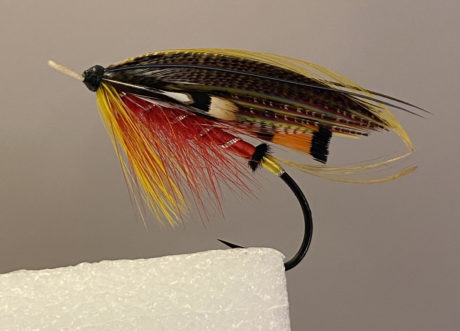
We at Deneki Outdoors are fans of Classic Fly Patterns. The sheer beauty of a fully dressed classic fly is a sight to look at. If These flies are not the easiest flies patterns to tie. They are complicated but even tiers with basic skills can achieve this fly.
It’s best to tackle this fly in stages. Sure you can tie this fly in one sitting, but that would be akin to trying a perfectly cooked Prime Rib Roast in one fell swoop. Take your time. Over the next three week’s we’ll release the steps to get this fly to fruition. Trust us, you’ll be better off.
A big Thank you to Stuart Foxall for the Instructions and Photos. You can find Stuart on Instagram @stuartfoxall.
I’ve been tying classic salmon flies for several years now and get asked quite a few questions on ‘how to’ and ‘where yo begin’? Most folks who start on classics will usually struggle as they begin with patterns like the Jock Scott or similar complicated patterns.
One of the best patterns, to begin with, is ‘The Kate.’ This version comes from George Kelson’s book, so I’ve done the married wing in single replicated fibres, which Kelson did with most of his patterns. I believe the Kate is a good starter as it’s not super complicated, and most of the materials are relatively easy to find.
I think Classic flies are worthwhile tying because they really make you think and plan your tying processes out. This planning will really help you become a better tier when tying modern flies.
Tie, Instructions, & Photos By Stuart Foxall.
Material list:
Note: The original patterns used materials from animals that are now endangered or extinct. Please do not attempt to use materials from endangered or extinct animals. Please consult your local fly shop for appropriate substitutes.
- Single hook
- Tag. Silver twist and light yellow silk.
- Tail. A topping.
- Butt. Black herl.
- Body. Two turns of crimson silk gut, and crimson Seal’s fur.
- Ribs. Silver tinsel (oval).
- Hackle. Crimson, from second turn.
- Throat. Light yellow hackle.
- Wings. (Thin) Grey Mallard, and tippet strands, Bustard, Golden Pheasant tail, Swan dyed light yellow, crimson and light blue; Mallard and a topping.
- Sides. Jungle.
- Horns. Blue Macaw
Step 1: Fix your single hook in the vise using a clear plastic to protect it. Use white thread tie in a loop of gut. If I were fishing this fly, I would use more gut along the shank of the hook for strength. But as this will be framed I’ve left the gut length tied in short.
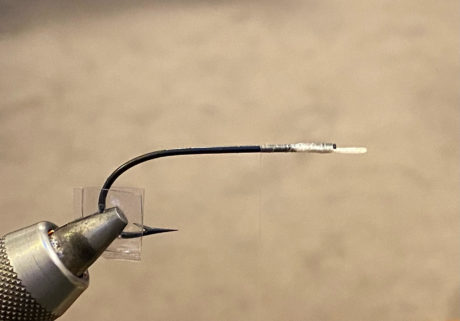
Step 2: Tie in the silver twist on the underside of the hook where you want your tag to start. Notice how I’ve ‘peeled’ the silver from the core of the tinsel to allow a neater tie-in point.

Step 3: Wrap the tinsel in touching turns back along the shank and tie off.

Step 4: Tie in some yellow silk.
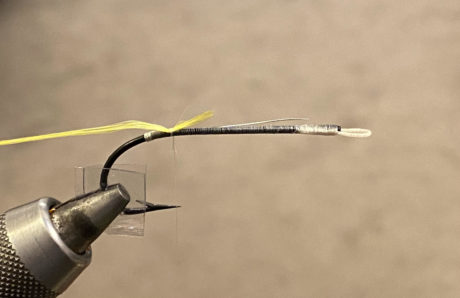
Step 5: And wrap down to the silver tinsel and then back over itself and tie off.
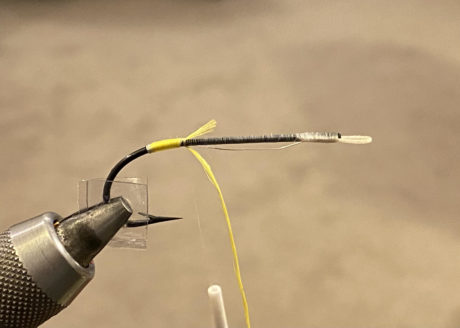
Step 6: Burnish the tinsel and silk. This will smooth out any irregularity in your materials.
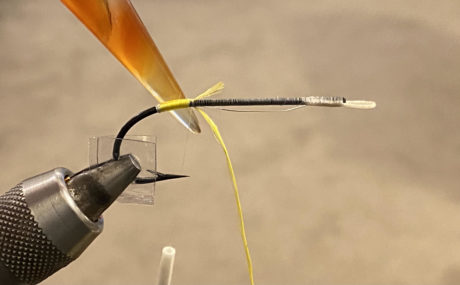
Step 7: Prepare your golden pheasant crest and tie it in as a tail. I’ve wrapped the tread down ‘over’ the yellow tag which stops the tail from kicking upwards.
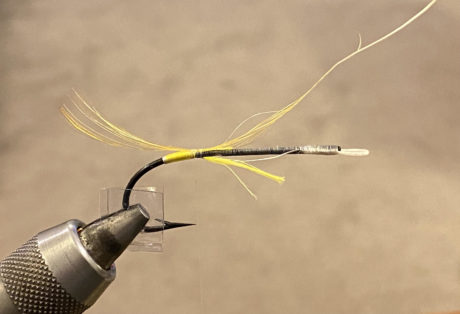
Step 8: I’ve taken my thread all along the hook shank to tie down and help create a smooth underbody. Bring the thread back down and tie in an ostrich fibre by the tip.
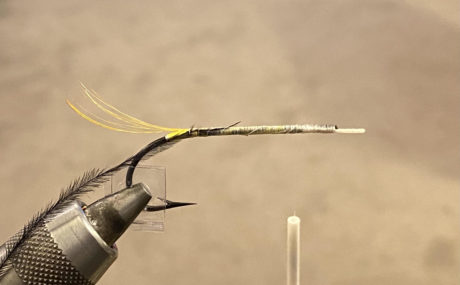
Step 9: Wrap the ostrich in a nice tight ‘ball’ to create a tidy butt. This helps hide the tying in processes of the tail section of the fly.

Join me next week for Part Two for The Kate.
Other Flies to Tie:
Leave a Reply